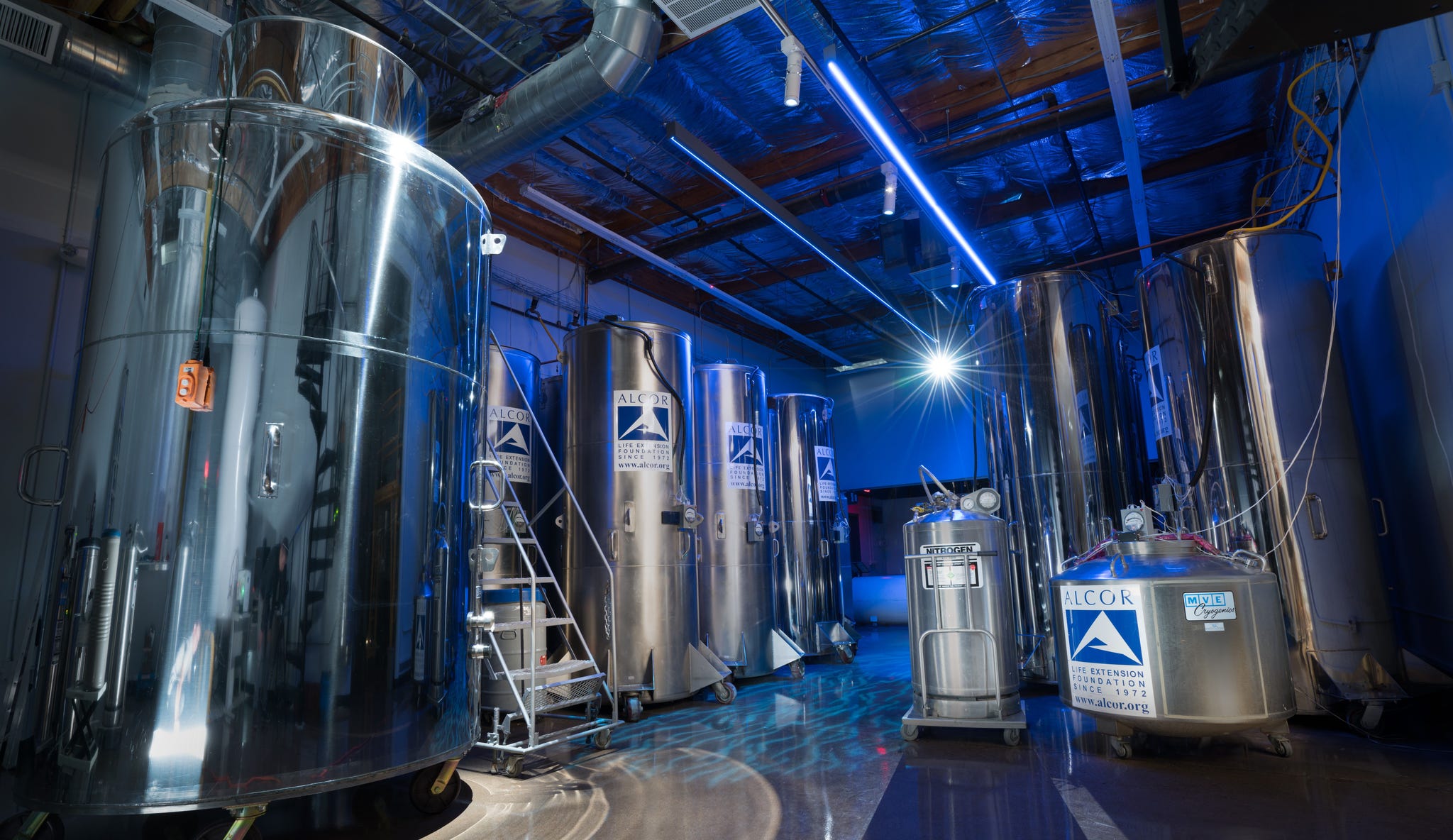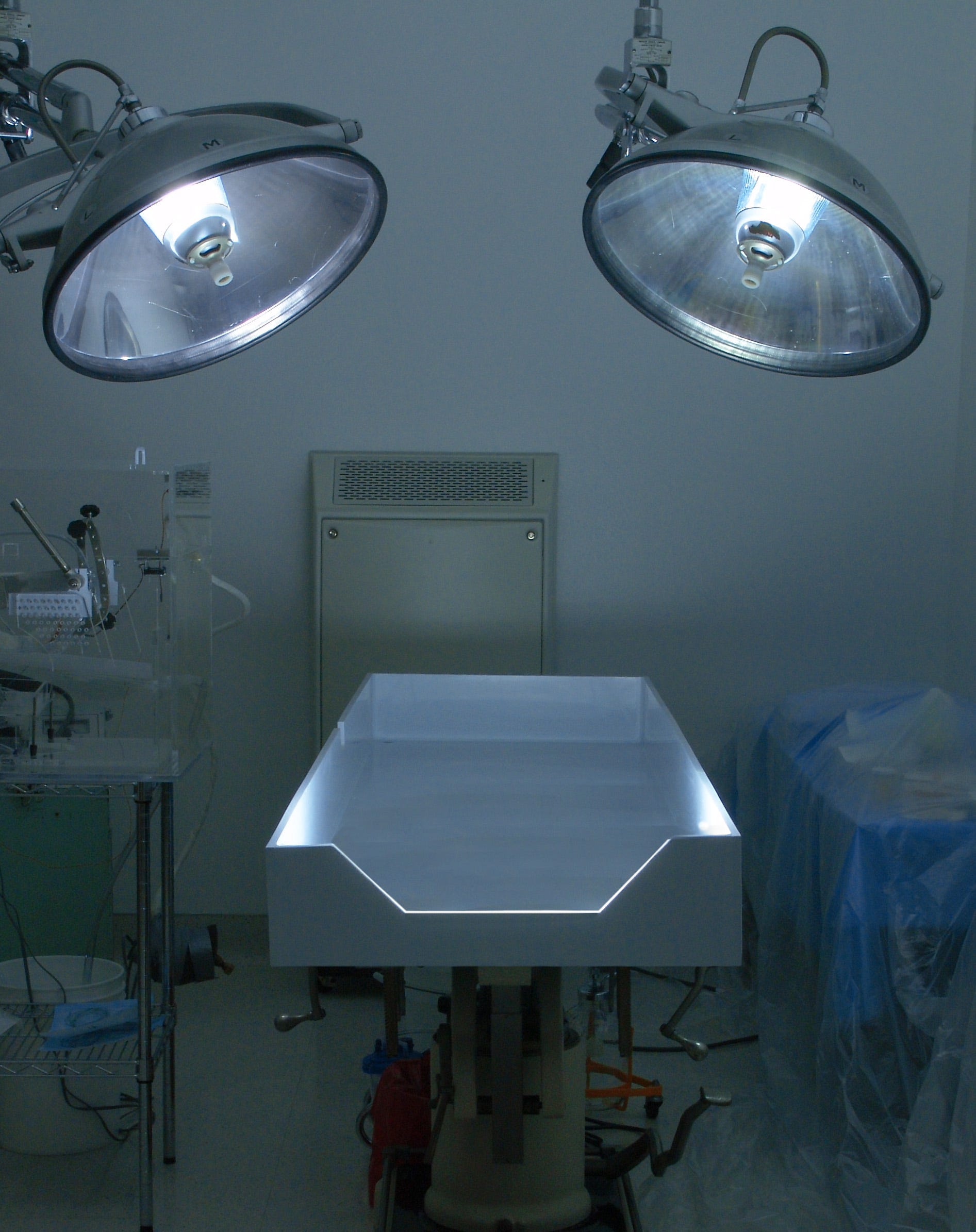In December 2014, Dr. Stephen Coles, a UCLA professor who studied aging, passed away from pancreatic cancer. While for many years Coles had made his home in Los Angeles, he chose to enter hospice care in Scottsdale, Arizona. That way, he could be close to the team of doctors who would remove and freeze his brain when he died.
Once Coles was pronounced dead, that team arrived at his bedside. They restored his breathing and blood circulation with a heart-lung resuscitator, also known as a thumper—a mechanical device used in emergency medicine to perform CPR—and injected his body with anticoagulants to keep the blood flowing. All of this was done to protect the brain from damage that can occur after too long without oxygen. Next, the body was cooled in an ice water bath, the blood replaced with an organ preservation solution.
Finally, Coles’ body arrived at its final destination: Alcor, the nation’s oldest provider of cryonics, the freezing of human corpses and brains in liquid nitrogen that will one day—technology willing—live again.
There, surgeons performed a neuroseparation, removing Cole’s head at the sixth cervical vertebra, and pumped cryoprotectants (medical-grade anti-freeze) into the now severed head. Then, a forensic pathologist opened the skull and removed the brain.
Coles had died around 10 a.m.; by dinner time, his brain was in a silver dewar, its thermostat set to -140 degrees Celsius.
Coles was Alcor’s 131st patient but one of its first to select brain-only cryopreservation, sometimes called neuropreservation or neurosuspension. A company announcement called Cole “an unusual brain-only patient,” and revealed that the “unfamiliar nature of the procedure created several major challenges, with procedures being revised even as the surgery and perfusion were underway.”
Ten years later, according to Emil Kendziorra, M.D., CEO of Tomorrow Bio, a German biotech firm that specializes in human cryopreservation, “brain removal is not a big issue,” and becoming more popular among those interested in cryonics. Storing a brain is faster, cheaper, and—despite the human taboo of decapitation—poised for a “higher degree of social acceptance,” Dr. Kendiziorra says, since anatomy departments and research institutions have been storing brains for years.
But what about the rest of the body? Won’t future humans need their legs and arms when they wake up from their cryonic suspension?
“While the brain is unique and cannot be recreated, the fundamental logic is that all the rest of the body can be recreated,” Dr. Kendziorra tells Popular Mechanics. This means that by the time technology exists to cure death and reanimate the human brain, slapping together a real or virtual vessel should be a cinch.
These ideas may seem far-fetched, but Dr. Kendziorra is quick to point out that “there was a time in the past when heart transplantation—taking one heart and connecting into another body—sounded pretty science fiction as well.”
But as neuropreservation grows in popularity, the question remains: what will we do with all of these frozen brains in the future?
Dr. Kendziorra is a trained medical doctor-turned-cryonics evangelist. As a former cancer researcher, he was frustrated by the agonizingly slow pace of progress and “never found it acceptable to tell a 25-year-old that they have incurable cancer and they’re going to die,” he says. “I think that everybody should live as long as they choose to.”
It’s important to point out that no human brain (or whole human for that matter) has ever been revived after death. The hope behind cryonics is that, eventually, very smart people using technology that hasn’t been invented yet will figure out how to conquer death. For anyone with an untreatable disease—or anyone who would like to live beyond their average lifespan—to elongate their lives, they just need to freeze themselves, and then wait for those smart (and hopefully benevolent) people to wake us up.
It’s also important to point out that “freeze” is the wrong word. Technically, cryonically preserved bodies aren’t frozen, they’re vitrified. You’ve probably heard that the human body is 70 percent water; if you popped a corpse in the freezer, there would be a lot of cracking when ice crystals formed in the cells and damaged the body beyond revival. Upon thawing, the body would be mushy, thanks to the ruptured cell walls caused by cracking.
Instead, cryopreservation involves vitrification, replacing the blood with a medical antifreeze, called cryoprotectant, then cooling the body gradually until it resembles glass.
The cost of these procedures—as well as transporting the body and storing it for untold years—is not cheap. For full-body suspension, Tomorrow Bio charges €200,000. That’s why, although he always recommends full-body cryopreservation, Dr. Kendziorra says that, at the bargain price of €75,000, brain-only cryopreservation is an attractive option to those hoping to extend their time on Earth.
Dr. Kendziorra says he feels strongly about making cryopreservation possible at more price points, but it’s not just humans hoping to live forever that will benefit from increasing affordability. The field of cryonics needs an infusion of cash and research funding if it is going to maintain long-term storage facilities and figure out how to cure death. Theoretically, more bodies—or brains—in more tanks will lead to a greater investment in these endeavors by the scientific community.
Today, Alcor’s membership is split nearly evenly between whole-body and neuro cryopreservation. While neurosuspension is easier and less expensive, there are still some compelling reasons to consider whole-body cryopreservation.
For one thing, no one can be sure that the brain contains everything we would need to feel like ourselves upon reanimation. Without the central nervous system, the spine, the endocrine glands, and microbiome, would we recognize ourselves upon waking in the distant future?
It’s a concern that led Becca Ziegler, a 23-year-old Tomorrow Bio member, to opt for whole-body preservation. “From my understanding, everything that makes me ‘me’ is in the brain,” she says, “but there are still some unknowns about consciousness and memories and how the brain interacts with the rest of the body. So I chose whole-body cryopreservation to ensure that there are no essential parts of my consciousness and memories that aren’t cryopreserved.”
Dr. Kendziorra says that “out of an abundance of caution,” his company always recommends whole-body cryopreservation, unless it’s not within the budget of a prospective member. After all, rousing from a cryonic state hundreds of years in the future with only half of your identity would be a real disappointment. “Better safe than sorry,” says Dr. Kendziorra.
According to Dr. Kendziorra, there are currently four working theories for what future generations will do with thawed-out human brains. “All of this is very speculative,” he warns, “but they have potential.”
The first and perhaps most realistic, based on existing technology, is 3D printing.
“We could 3D print all the other organs and connect the brain,” Dr. Kendziorra says. “This technology isn’t there quite yet, but it’s probably not that far away anymore.” Indeed, 3D organ bioprinting—the use of human cells to create three-dimensional tissue—is a quickly evolving field, fueled by the hundreds of thousands of people who need organ transplants. Jennifer Lewis, a professor at Harvard University’s Wyss Institute for Biologically Inspired Engineering, predicts the technology could be ready in a decade.
Another possibility will be the development of clones using DNA taken from brain tissue. The clone, of course, will need to be created without a brain, so that the old one can be transplanted. Since the birth of Dolly the sheep in 1996, scientists have cloned 22 animal species as well as a human embryo. Could brainless vessels be next?
Some scientists believe clones won’t be necessary, and that reanimated brains could be transplanted in donor bodies, a method neurosurgeon Sergio Canavero called “technically feasible,” in a recent paper (published in a journal he is an editor of, it should be mentioned). After detailing how the cranial nerve and vascular system could theoretically be reconnected to the brain, the controversial scientist admitted there was lots of work still ahead, including cadaveric rehearsals, tests in brain-dead organ donors, and the development of new surgical tools. “With appropriate funding,” he argued, “a long-held dream may finally come true.”
The third way a reanimated brain could once again express itself is by being placed in an artificial body. “In simpler terms, a robot body,” says Dr. Kendziorra. Elon Musk thinks its possible and so does Michael S.A. Graziano, a Princeton neuroscientist. Graziano argued in a Wall Street Journal essay that uploading a mind into a robot body would take only two pieces of technology: an artificial brain and a scanning device with the ability to “measure exactly how [a brain’s] neurons are connected to each other, to be able to copy that pattern in the artificial brain.”
Then again, the robot might not even be necessary. “We could reinstantiate the brain by connecting it to a computer, and all sensation inputs and outputs would be virtual,” Dr. Kendziorra explains. “On some abstract level, maybe there’s not much a difference between real and virtual.” He’s got a point; some scientists already believe we’re living in a simulation.
Regardless of just what future humans do with cryonically preserved brains, Dr. Kendziorra believes it’s going to take a long time to figure it out. “Medically and technologically we are not there yet, and we will not be there for many, many decades. It’s going to take a significant amount of time. And in fact, it might never work.”
But if there’s a reason to stay hopeful about cryonics, Dr. Kendziorra says it’s because the other option isn’t so great either. “The alternative,” he laments, “is death.”
Ashley Stimpson is a freelance journalist who writes most often about science, conservation, and the outdoors. Her work has appeared in the Guardian, WIRED, Nat Geo, Atlas Obscura, and elsewhere. She lives in Columbia, Maryland, with her partner, their greyhound, and a very bad cat.















